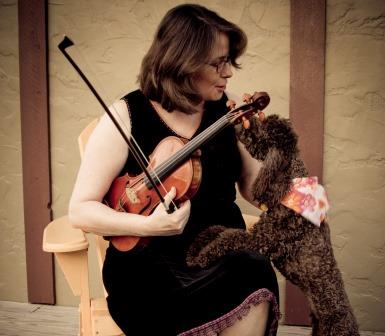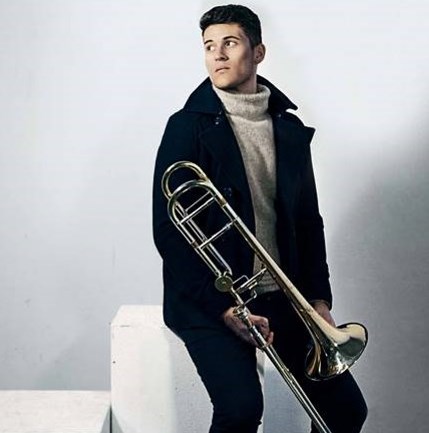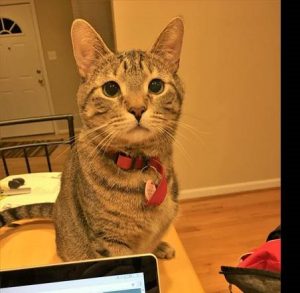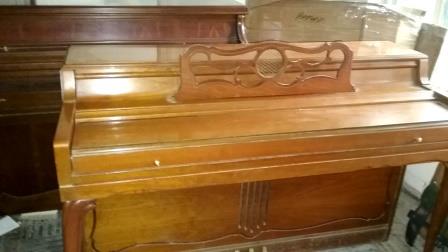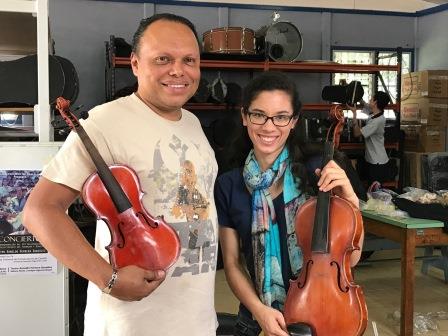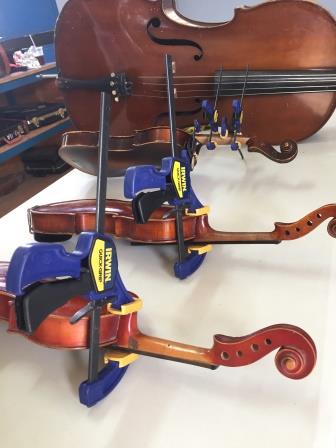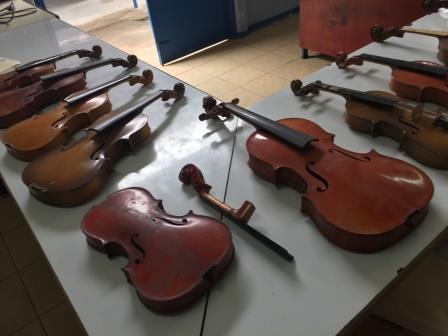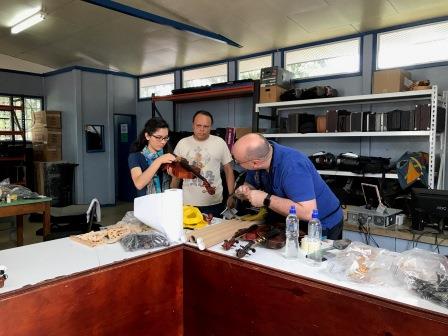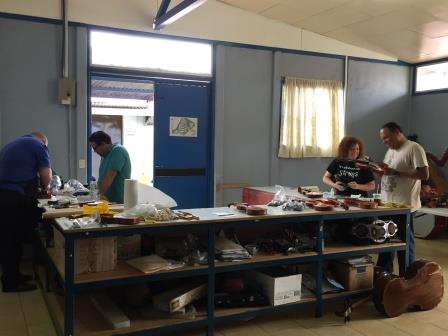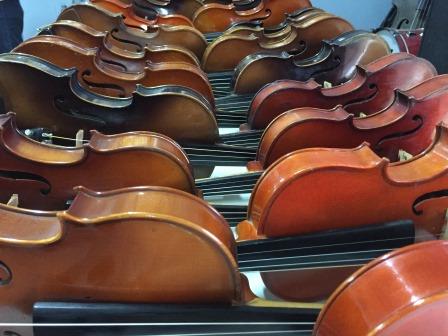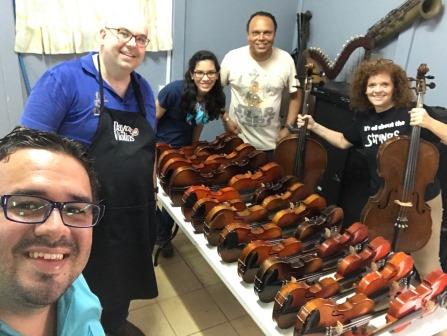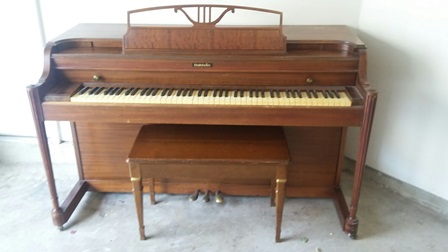This August, Potomac Arts Academy is excited to host two incredibly special experiences for violin and viola teachers and their students this summer. A Teacher Workshop and Violin Masterclass featuring Dr. Cora Cooper – Violin Professor at Kansas State University – will focus on repertoire at various levels – all composed by female composers!
Dr. Cora Cooper, compiler of the Violin Music by Women and Viola Music by Women graded anthologies, will be teaching a workshop for violin and viola teachers and also a masterclass that will feature several violin students from the Academy.
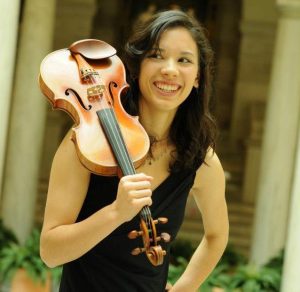
Claire Allen, a Teaching Artist of Violin at Mason’s Potomac Arts Academy [pictured above], will co-teach the workshop. We sat down with both of them learn more about these special opportunities for the string community!
Q: What inspired you to create this workshop and masterclass?
C. Allen: During my first year teaching, my student Hannah (then age 6), looked at me in the middle of a lesson and asked, “Why are all the composers I learn about men?” I didn’t have a good answer for her. That night, I went home and Googled, “Violin Music By Women” and was ecstatic to discover Cora’s amazing anthologies. I instantly ordered all of them. I then poured my feelings into a blogpost, someone told Cora about it, and we connected on Facebook!
Fast forward to a year later, when my students and I hosted a recital entirely of music by women and Cora attended! These workshops are the next step for both of us – to empower other teachers with the tools to integrate this repertoire into their teaching curriculum and to become aware of implicit gender bias in the way classical music is taught.
C. Cooper: To spread the word! I hope that teachers will be excited by the potential for musical growth, as well as equity, that the anthologies offer. When people see how seamless and practical it can be to integrate these pieces into the standard teaching canon (largely thanks to Claire’s great pedagogical mind), and hear what wonderful performance vehicles they are, they no longer “fear the unknown”– in fact, the enthusiasm for the material is amazing!
Q: What is important about having easily accessible repertoire by female composers?
C. Cooper: There’s been a lot of talk in recent days about “normalizing” certain behaviors, generally in terms of those behaviors being undesirable. In the case of teaching music by women composers, we do want to normalize that as a behavior! Since the deck is so stacked in favor of compositions by men in our teaching repertoire, it would never happen unless music by women is easily accessible. It is harder to find, no question, particularly to find suitable pieces for every level of student. Much of the music used in the anthologies was out of print, or previously unpublished, but now it’s readily available.
C. Allen: In classical music, the tradition is an important part of what we do. However, it can be very easy to teach the same set of pieces in the same order to every student who comes through your door! Exploring these anthologies and needing to see how they work with real students has meant that my students get to play different pieces from each other. And, the more they hear the different pieces, the more they look forward to the day when they get to play it! Having these anthologies readily available, with repertoire in a variety of levels, made it easy for me to add the pieces into the modified-Suzuki curriculum that I already use. It makes it a normal part of our learning in my studio. One of the easily forgotten things about tradition is that it’s constantly evolving, and I’m so excited to add the music of these little-known composers to the tradition that I teach.
Q: What is your favorite thing about teaching people about this repertoire?
C. Cooper: I love to see the looks on people’s faces when they hear the music and realize how fresh, fun, and useful it is from a teaching standpoint. It’s not a chore to add it to your teaching rep; instead, it can be revitalizing. I’ve had a number of Suzuki teachers tell me that it saved their sanity! The variety in style, historical period, tempos and character can be a welcome break from all the minuets and bourrees. The enthusiasm from teachers has been extremely rewarding, and I think it’s been eye-opening for them to “meet” all these women composers they didn’t know existed.
C. Allen: It has DEFINITELY saved my sanity! It makes studio recitals so much more interesting, and I love that I can introduce 20th and 21st century music to my students at a much earlier stage. I think my favorite thing, though, is that learning music written by women is a normal thing for my students of both genders. The mind-blowing “WHAT? There are female composers?” revelation that I had, isn’t something that will ever happen for my students. They’re growing up in a world where playing music by women is just a thing that happens.
Q: Why is integrating this repertoire into a sequential violin method important for today’s world?
C. Cooper: If you look at most violin/viola studios, the population is predominantly female. But when you examine the repertoire, it’s about 99% composed by men. What does that tell these young women? This summer there have been a number of interesting articles about the “Women Woman” movie. My favorite, an op ed in the June 5 NY Times, by Jessica Bennett entitled “If Wonder Woman Can Do It, She Can Too” says: “…so much of the messaging we receive about who can do what in the world is subliminal — the absence of what’s missing more even than what is there.” In other words, “you can’t be what you can’t see.” If all students grow up with music written by both male and female composers, then there’s no exclusion. Anyone can do it, and again, that’s an expectation we want to normalize.
C. Allen: My students are growing up in a world where the same opportunities are open to women and men, and it’s important to me that none of them feel like their options are limited because of their gender. When giving dress codes for concerts, I consciously avoid the use of gender pronouns. I assign repertoire from the Violin Music By Women anthologies with the same care and gravity that I do pieces from any other book. I try to honor the musical ideas and the emotions of all my students, and to focus on their musical accomplishments and intrinsic worth as human beings without letting conscious or unconscious bias based on gender, race, or any other label make me see them differently.
The Violin/Viola Teacher Workshop will be an engaging introduction to several of the pieces from the Violin Music By Women anthologies and will provide a suggested sequence of repertoire, in addition to teaching points and practice methods for each of the pieces.
The Violin Masterclass will give students, parents, and teachers the opportunity to observe Dr. Cooper teaching intermediate and advanced violin students who are performing repertoire from the anthology.
The Gipsy Fiddler, by Eve Hungerford
Ivy Xu, violin
Kansas Memories Suite, by Hannah Bartel
I. Rainy Daze
II. Green Tomatoes
Emilia Grabowski, violin
III. ‘Lil Blue
IV. The Ice Skating Pond
Lindsey Gibson, violin
Romanze, by Wendy Ireland
Henry Wolfe, viola
Tanglefoot’s Mad Chase, by Florence Morey
Hannah Liu, violin
A Sketch, by Rosalind Ellicott
Lauren Powell, violin
Knees-Up Mambo, by Claire Scholes
Ethan Hemmings, violin
You may also be interested in our Summer Violin Bootcamp!

